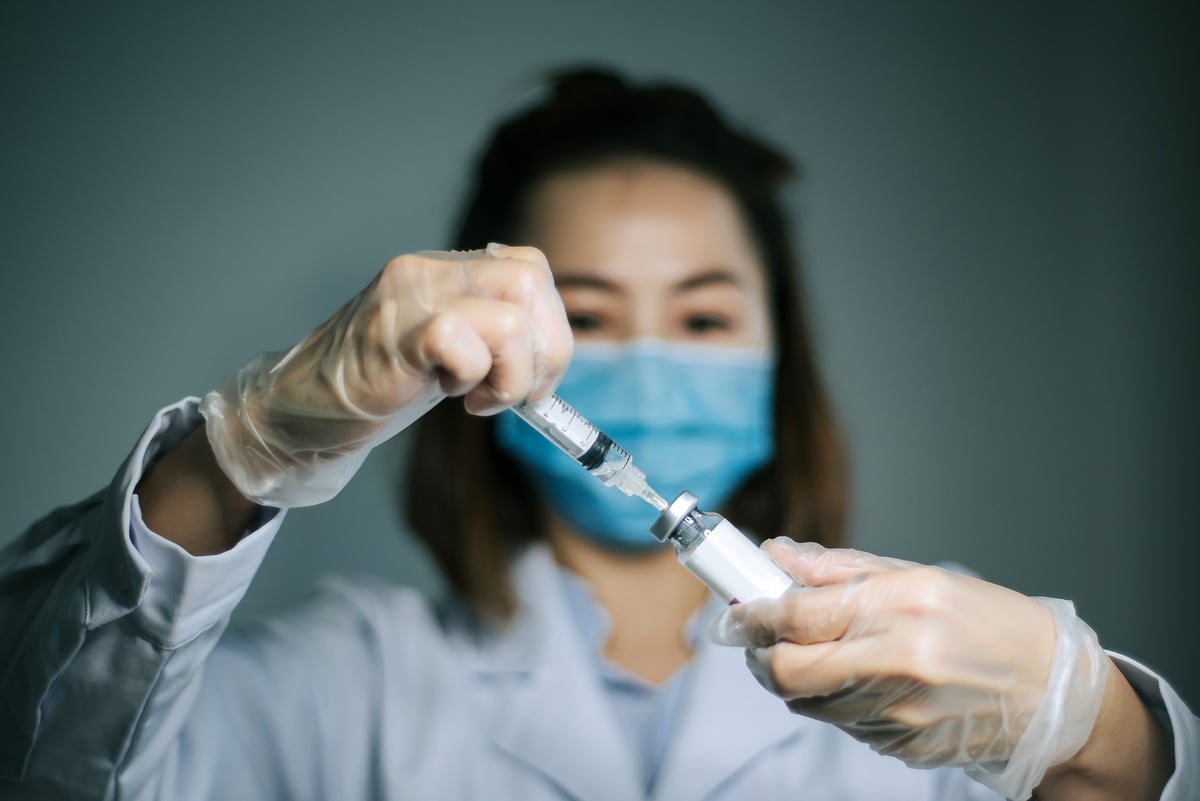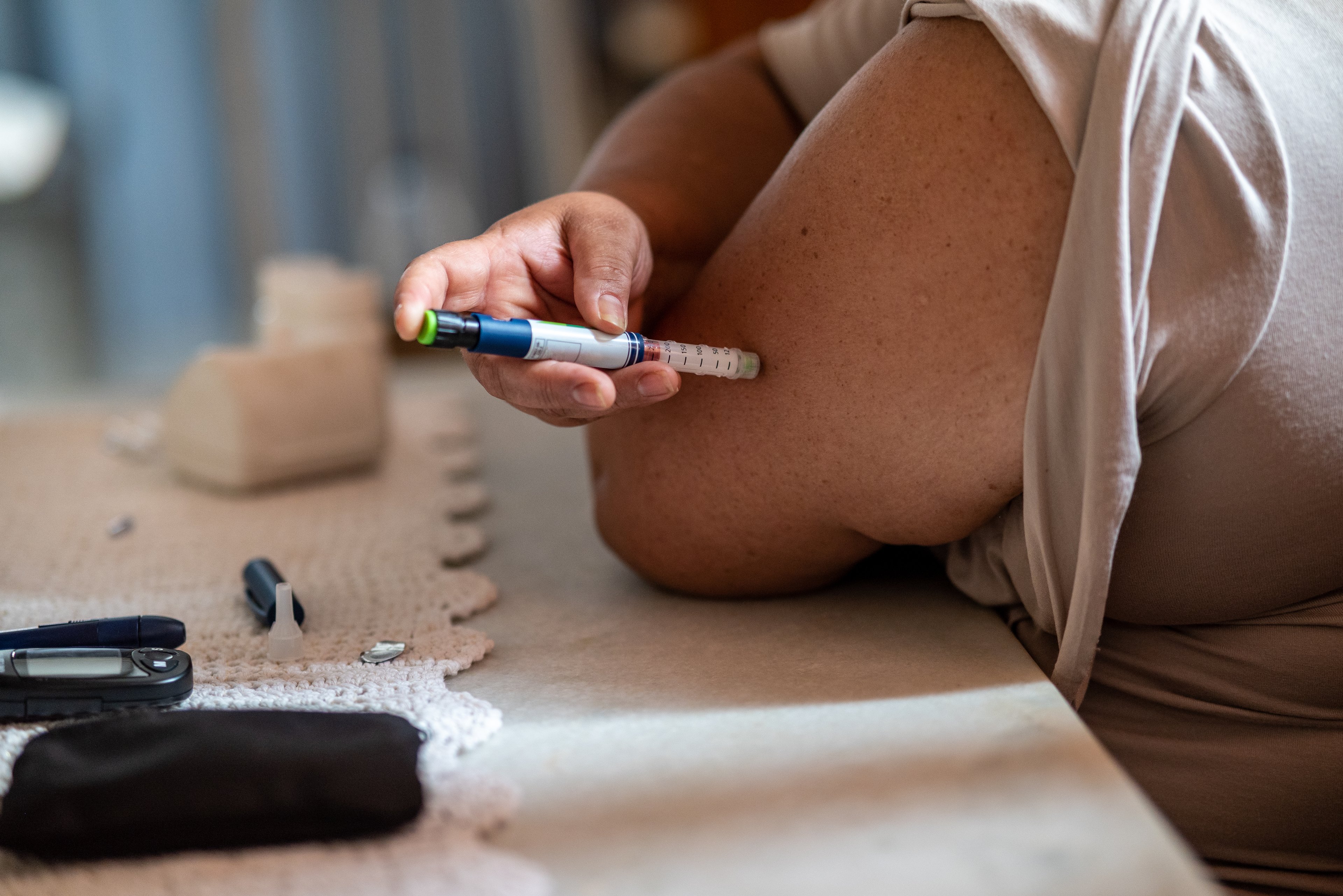A stock market that keeps reaching all-time highs hardly seems like anything for investors to complain about. But if you're trying to build a growing stream of passive income, extended bull markets are more than a little annoying.
At recent prices, the average yield on dividend-paying stocks in the benchmark S&P 500 index is an unattractive 1.2%. While the overall market looks overbought (prices above intrinsic value), shares of Novo Nordisk (NVO +1.84%) and UnitedHealth Group (UNH +0.86%) are more than 50% below their all-time highs.
These stocks offer yields that are more than double the market average, plus they have a history of relatively rapid payout increases. Here's a look at why they're down, and how they could help everyday investors grow their passive income streams.

Image source: Getty Images.
1. Novo Nordisk
Shares of Novo Nordisk peaked last year as enthusiasm for anti-obesity medications reached a fever pitch. Then compounding pharmacies such as Hims & Hers Health that were allowed to sell their own versions of semaglutide pressured sales somewhat, and this hammered the stock price. Shares of this pharmaceutical giant previously famous for diabetes treatments are down 56% from their peak.
As a Danish company, Novo Nordisk reports in Danish Krone, and the fluctuating exchange rate can make dividend growth seem a bit random. The company doesn't pay equal quarterly dividends that Americans are used to. Instead, it offers one large ordinary dividend payment annually that has risen 129% in five years. It also delivers a smaller interim dividend that has risen 105% in five years.
Novo Nordisk will most likely continue raising its dividend payout in the years ahead. Even if the payout remains stagnant, investors who buy at recent prices would receive a 2.5% yield. That's more than twice the average yield that dividend stocks in the S&P 500 index are offering these days.

NYSE: NVO
Key Data Points
Novo Nordisk's lead drug, semaglutide, is a glucagon-like peptide-1 receptor agonist (GLP-1) marketed as Ozempic for diabetes and as Wegovy for obesity. The company reported first-quarter sales of semaglutide that rose by 50.3% year over year. Sales of tirzepatide, a competing treatment marketed by Eli Lilly, rose 165% over the same time frame.
Tirzepatide has been gaining share because it appears more effective at rapidly reducing weight. Novo Nordisk stock tanked in March because CagriSema, an experimental treatment investors were hoping would compete with tirzepatide, produced lackluster results in a big clinical trial.
While semaglutide isn't the most powerful treatment for weight reduction, it is relatively easy to tolerate. When it comes to weight management treatments, a lack of side effects is an important selling point. Despite competition with compounding pharmacies and Eli Lilly, Novo Nordisk has more than doubled earnings per share over the past three years.
Now that the semaglutide shortage has officially ended, the Food and Drug Administration has generally stopped allowing compounding pharmacies to sell their own versions. This should give Novo Nordisk's sales a nice tailwind going forward.
At recent prices, Novo Nordisk is trading for just 16 times forward-looking earnings estimates. That's an appropriate valuation for a business growing earnings by a single-digit annual percentage and extremely low considering semaglutide's growth rate. Scooping up shares now could lead to huge dividend payments once you're ready to retire.
2. UnitedHealth Group
It might not feel like it when you pay their premiums, but the health insurance industry operates on relatively thin margins. Healthcare expenses tend to rise in a steady, predictable fashion, but this hasn't been the case lately for UnitedHealth Group. The stock is down about 55% from its peak last year because it underestimated how rapidly healthcare expenses have risen.

NYSE: UNH
Key Data Points
Following a downward revision to earnings guidance that it announced in April, UnitedHealth Group's CEO left the company in May. The company also suspended its new outlook less than a month after announcing it.
At recent prices, UnitedHealth Group shares offer a 3% dividend yield. The COVID-19 pandemic made managing healthcare benefits extra challenging, but UnitedHealth still managed to raise its dividend payout by 77% over the past five years, so that makes me optimistic.
While 2025 might be a year that its shareholders would like to forget, there's no reason to suspect declining earnings to continue into 2026 and beyond. UnitedHealth is a middleman that always passes increasing healthcare expenses to its customers in the form of rising premiums. The company's Optum Health segment employs roughly 10% of America's physicians. As America's largest employer of physicians, it can pull more levers to control rising expenses than its peers.
We don't know if management can formulate new earnings guidance that the market finds acceptable when it announces second-quarter earnings on July 29, but even if it takes a few quarters to get back on track, the dividend payments you receive in the meantime are yours to keep. Adding some shares now and holding over the long run looks like a very smart move.





